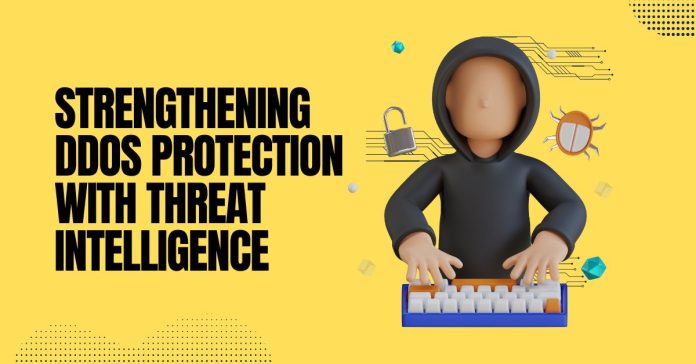Here, I will show you how to strengthen DDoS Protection with Threat Intelligence…
When your adversaries get more creative, your defense has to get smarter. For businesses facing the threat of DDoS attacks, which means gaining greater insight into the weapons targeting your network and how best to act against them.
There is no question that DDoS attacks are now more dangerous than ever. According to the 2024 A10 DDoS Weapons Report, there are more than 15 million DDoS weapons currently available for use by cybercriminals.
New multi-vector and application-layer techniques can bypass traditional defenses, while DDoS-as-a-service tools and AI technologies make it simple for even low-level hackers to take down victims. The explosion of IoT—encompassing over 29 billion connected devices by 2027—has provided fertile ground for recruiting new devices into botnets to launch and amplify attacks.
In light of the intensifying DDoS threat, organizations need a way to ease the strain on overworked security teams and overloaded security solutions, to understand the nuances of each infrastructure that needs protection, and to move quickly to reduce the risk of an attack. DDoS-focused threat intelligence can be an invaluable resource on all three counts.
Table of Contents
Gaining Insight into Potentially Malicious Traffic
One of the main challenges in DDoS defense is recognizing which traffic poses a threat so you can focus your detection and mitigation solutions for maximum effectiveness. As its name suggests, threat intelligence fills this need.
Security researchers continually scan the internet to discover the types of DDoS weapons being used, including DDoS-specific malware, reflected amplification attacks, and IP stresses and booters; where in the world attacks are originating; and compromised IP addresses known to have been used in attacks.
Taking Action to Prevent Attacks
Based on the information provided by this specific threat intelligence, organizations can work more efficiently to strengthen DDoS protection. Lists of suspect IP addresses can be deployed into firewalls, routers, and other network hardware to log their traffic for signs of a potential attack.
Traffic with a high likelihood of malicious intent can also be filtered out proactively before an attack has a chance to overwhelm the target’s systems or overload the other security systems already deployed in the network.
For security and IT teams, trends and analytical insights on DDoS activity offer valuable guidance to recognize elements of the infrastructure in need of enhanced protection, configurations that should be adjusted, systems that may have been compromised, and patches to be applied to reduce vulnerability to attack.
While DDoS threat intelligence can provide a vital starting point for organizations with little or no existing DDoS protection, it also has excellent value for those with defenses already in place by helping these solutions perform more efficiently.
Policies based on threat intelligence can be deployed into security devices to zero in on the traffic most likely to be malicious. For companies using on-premises DDoS mitigation, a first layer of filtering eases the burden on hardware and software resources so they can focus more effectively on the most sophisticated threats.
For companies using cloud-based scrubbing, DDoS threat intelligence lowers the overall volume of traffic that must be diverted for mitigation, reducing both cost and latency.
Whether used on its own or in conjunction with a DDoS protection solution, DDoS threat intelligence provides a vital layer of defense against the growing DDoS threat. When you know your enemy, you are better able to stop their attacks.
INTERESTING POSTS
- 8 Tips To Improve At Call Of Duty: Modern Warfare
- Top 5 DDoS Attack Challenges For Telecom Companies
- Top 5 Cybersecurity Threats That eCommerce Websites Should Watch Out For
- How To Prevent A DDoS Attack On Your WordPress Site
- The Gaming Industry Must Be Proactive About DDoS Attacks
- Best VPN for Gaming You Should Consider
About the Author:

Elisa Caredio
Elisa Caredio is Head of Security at A10 Networks. She is enthusiastic about network security, networking, and cloud, and responsible for helping A10 evolve its technology for customers to easily adopt. Caredio previously held positions at Citrix and Cisco. She has a master’s degree in telecommunication engineering from Politecnico di Torino University.







